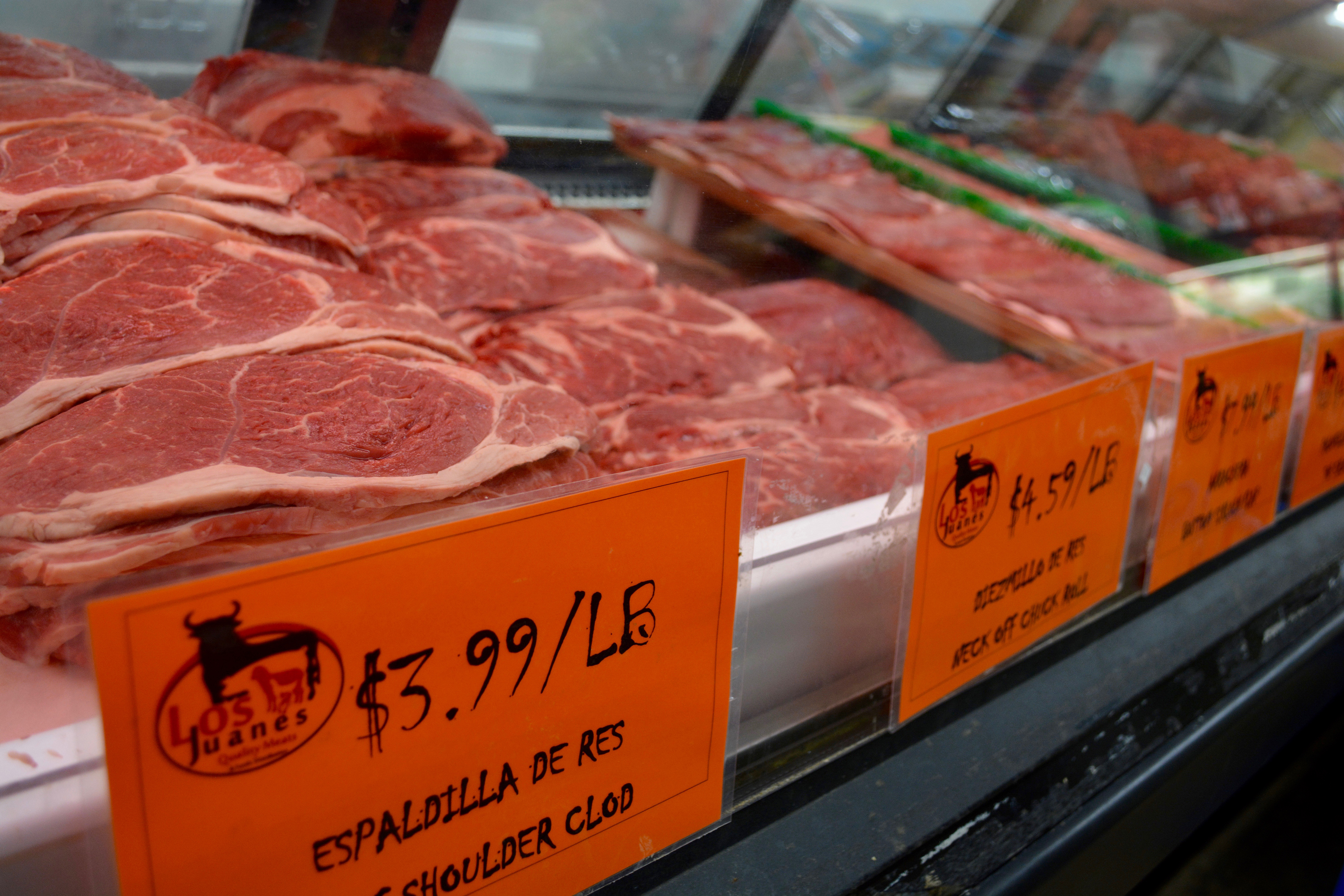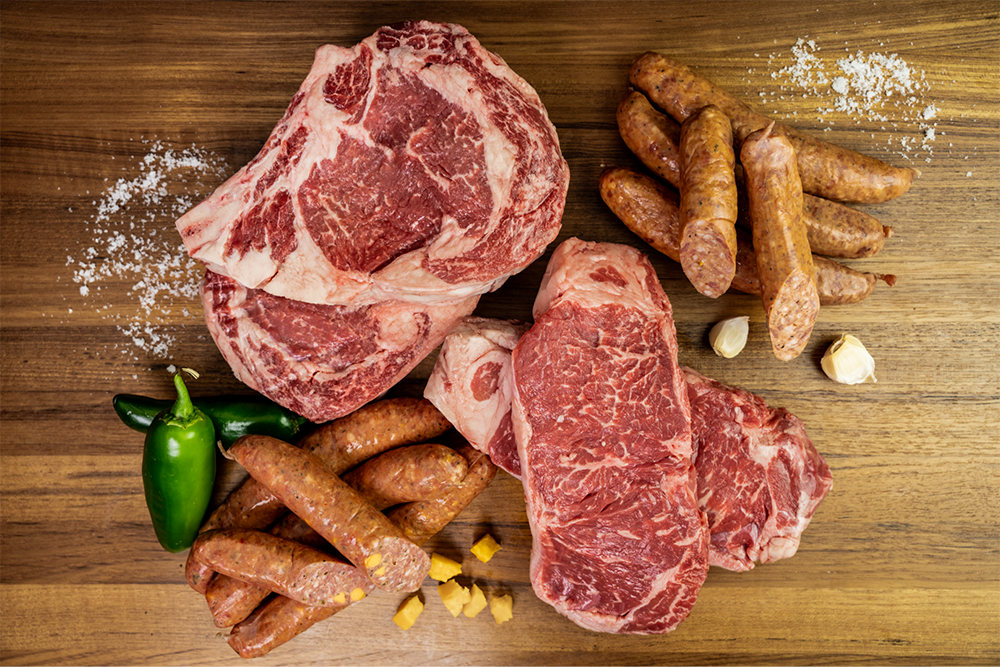Why Residents Love Bagley Farms Meat Market Edwardsville IL for Their Meat Shopping
Why Residents Love Bagley Farms Meat Market Edwardsville IL for Their Meat Shopping
Blog Article
Discover the Art of the Butcher's Cut in a Modern Meat Market
In the ever-evolving landscape of contemporary meat markets, the butcher's cut has actually transcended its standard origins, combining old-time workmanship with contemporary methods. Today's butchers are not simply cpus of meat; they are experienced artisans that highlight sustainability and honest sourcing. Their know-how in choose and preparing cuts customized to details culinary needs uses an exceptional dining experience. What truly sets the modern butcher apart is their capacity to build a deeper link in between customers and the origins of their meat. Exactly how do these masters balance tradition with development, and what effects does this have for the future of meat consumption?
Development of Butchery Strategies
The evolution of butchery methods mirrors an abundant tapestry of advancement and adjustment driven by innovations in modern technology, modifications in consumer need, and a deeper understanding of meat scientific research. Historically, butchery was a craft passed down through generations, with approaches refined over centuries to optimize return and flavor. The commercial change ushered in mechanization, transforming standard practices and allowing large handling.
The mid-20th century saw butchery techniques additionally refined by scientific insights into muscle biology and meat aging, boosting both tenderness and preference. Technologies like vacuum packaging and refrigeration extended product shelf-life, permitting butchers to expand offerings and boost quality control. This duration additionally noted the surge of specialized devices, such as band saws and meat slicers, which increased accuracy and efficiency in meat handling.

Computerized systems now assist in tracking animal provenance and optimizing cuts to fulfill specific consumer choices. In addition, a rebirth in artisanal butchery has arised, mixing typical abilities with contemporary understanding to cater to consumers looking for moral and lasting meat options.
Recognizing Meat Cuts
Recognizing the details of meat cuts is important for both butchers and customers looking for top quality and value. For butchers, exact cuts reflect skill and regard for the craft, making sure minimal waste and ideal yield.

Recognizing muscular tissue structure is essential; muscles made use of extra frequently by the animal often tend to be harder and are best suited for sluggish food preparation techniques, while less-used muscle mass, like those located in the loin, are a lot more tender and ideal for cooking or roasting. Experience with these differences encourages customers to make More Bonuses informed selections, improving their cooking undertakings.
Choosing High Quality Meat
Picking the appropriate meat involves greater than simply selecting an aesthetically appealing piece from the display. bagley farms meat market edwardsville il. The art of choosing top quality meat requires a critical eye and expertise of details qualities that represent quality and quality. To start with, take note of the color; beef ought to have an intense, cherry-red shade, while lamb must show a soft pink tone, and pork a pale pink. This shows the meat is fresh and hasn't been subjected to oxygen for too lengthy.
Second of all, take into consideration the marbling, which describes the white flecks of fat within the muscular tissue. Appropriate marbling is a key indicator of tenderness and flavor, as it melts throughout food preparation, boosting the meat's juiciness. Remember, higher marbling frequently correlates with superior high quality cuts, such as USDA Prime.
Structure is another vital aspect; meat ought to really feel solid to the touch, not slimed or extremely soft. Furthermore, be mindful of the aroma. Fresh meat must have a clean, neutral smell, devoid of any kind of sour or repulsive smells.
Coupling Cuts With Food Preparation Approaches

On the other hand, tougher cuts like brisket and chuck roast are abundant in collagen, which breaks down right into jelly when cooked gradually. These cuts are ideal for braising click over here now or slow roasting, enabling the meat to tenderize gradually and establish deep, intricate tastes. Cuts such as brief ribs and pork shoulder get on well with slow-cooking methods, where prolonged cooking times change their robust textures right into succulent meals.
Lamb shanks and oxtail, which require long term food preparation to tenderize, are best candidates for cooking or sluggish simmering. These techniques coax out rich, passionate tastes while maintaining moisture. By recognizing the distinct features of each cut, chefs and home chefs alike can elevate their cooking productions, making certain each dish is both pleasing and memorable.
The Butcher's Role Today
Navigating the advancing landscape of the contemporary meat market, the butcher's function today expands past simple prep work of cuts. Contemporary butchers are culinary artisans, teachers, and supporters for lasting practices.
In addition to crafting precise cuts, butchers now engage straight with consumers, providing cooking advice and customizing options to fit private requirements and preferences. Their know-how in meat aging, marbling, and flavor profiles encourages consumers to make informed decisions, improving their culinary experiences. This customized service exhibits the butcher's advancing duty as a relied on advisor in the kitchen area.
Additionally, butchers are pivotal in minimizing waste, using whole pets to produce varied items such as sausages and supplies. This thorough technique not just respects the pet however also aligns with modern sustainability goals. In this way, the contemporary butcher embodies both tradition and advancement, adapting to an ever-changing market while protecting the virtuosity and stability of their craft.
Verdict
Proficiency in comprehending varied meat cuts and quality signs encourages butchers to provide educated recommendations, lining up certain cuts with optimum food preparation approaches. By honoring historic methods while welcoming contemporary demands, the butcher's function continues to be crucial in Get the facts today's sophisticated meat market.
Report this page